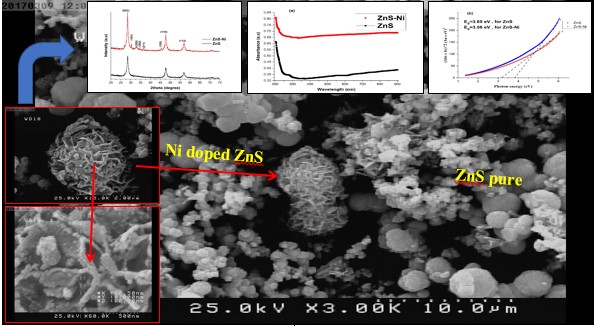
Structural, Opto-Magnetic Properties of Ni Doped ZnS Synthesized by Solvothermal Method
Hussein M. Hussein
Том 85 №4
264 просмотров;
In recent years, the ZnS compound has attracted great interest for use in thin-film solar cells as a buffer layer. To improve its structural and photovoltaic properties, in turn improving the conversion efficiency of thin-film solar cells, the Ni element was introduced into the host ZnS compound through doping by a solvothermal process. The results reveal that the Ni2+ -ion has an impact on the ZnS nanocrystal due to its stronger hybridization than that of the Zn2+ion. When Ni is incorporated into the host ZnS compound, the crystal structure of the ZnS compound becomes slightly distorted and possesses a novel opto-magnetic feature which results in optimization of the optical properties of the ZnS nanoparticles. Thus, the magnetic energy generated by the doping process is widely distributed over an absorption band in the UV-Vis ranges. Furthermore, the band gap of the ZnS nanocrystal decreases when Ni is incorporated into the ZnS nanocrystal. Additionally, introducing Ni into the ZnS nanoparticles leads to a change in the morphology of the ZnS nanoparticles from spherical-like to flake-like or plate-like particles because the magnetic exchange energy generated by the higher concentration of ferromagnetic Ni ions is accompanied by a lower pressure inside the unit cell due to the smaller ionic radius of the Ni2+ ion compared to that of the Zn2+ ion. The author suggests that incorporating Ni into the host ZnS crystal may enhance the optoelectrical properties of the ZnS compound which is suitable for use as a buffer layer in thin-film solar cells.